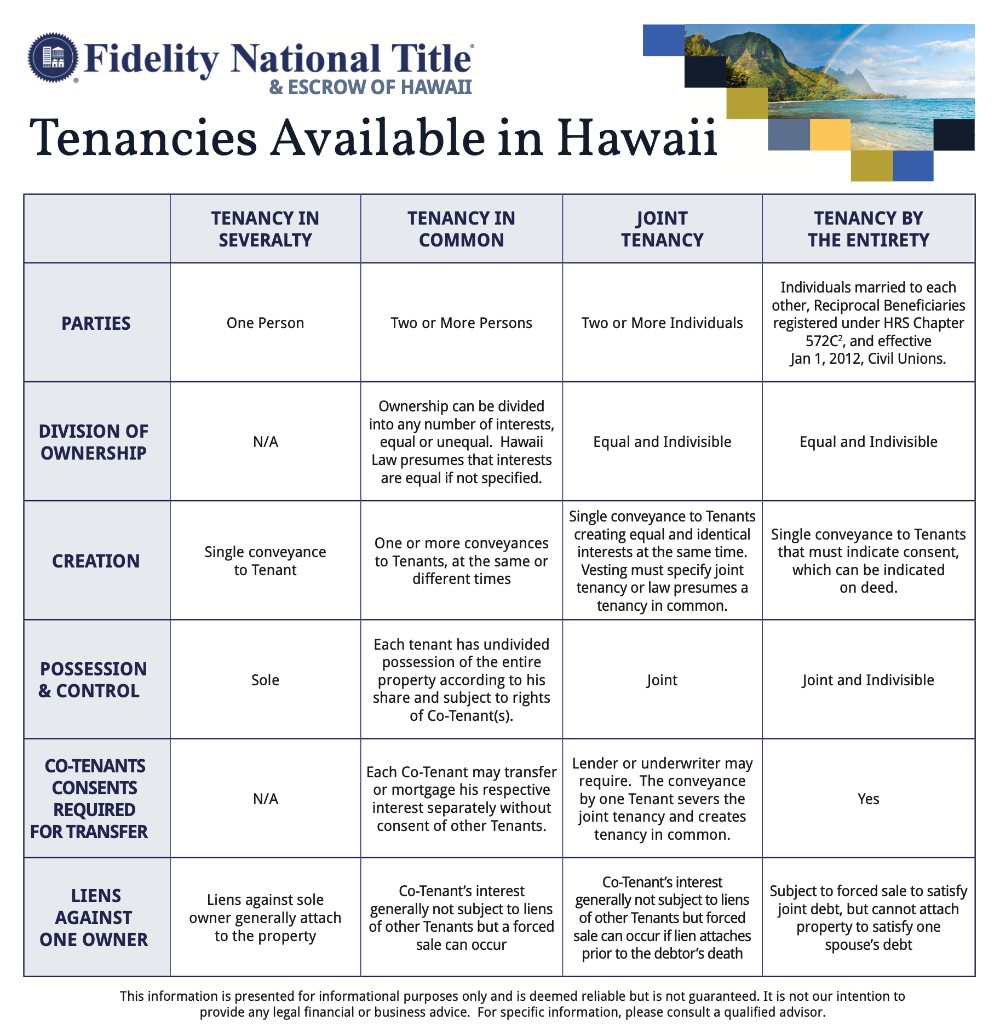The question about how to hold title comes up often when purchasing property in Hawaii. It’s essential to understand the various ways to hold title, as this decision affects ownership rights, transferability, and estate planning. Here are the common methods:
- Tenancy in Severalty: This is sole ownership by one individual or entity. The owner has full control and can transfer the property at will. Upon the owner’s death, the property becomes part of their estate and is subject to probate.
- Tenancy in Common: Multiple individuals hold undivided interests in the property, which can be equal or unequal. Each owner can sell or transfer their share independently. There is no right of survivorship; upon an owner’s death, their interest passes to their heirs or as directed by their will, potentially leading to probate.
- Joint Tenancy with Right of Survivorship: Two or more individuals own equal shares with the right of survivorship. When one owner dies, their share automatically transfers to the surviving owner(s), bypassing probate. However, any owner can unilaterally transfer their interest, which can convert the ownership to tenancy in common.
- Tenancy by the Entirety: Exclusive to married couples or reciprocal beneficiaries in Hawaii, this form treats the couple as a single legal entity. It includes the right of survivorship, so if one spouse dies, the surviving spouse automatically owns the entire property without probate. Neither party can transfer their interest without the other’s consent, and the property is generally protected from creditors of one spouse.
- Trust Ownership: Placing property into a trust allows for management according to the trust’s terms, which can help avoid probate and provide for beneficiaries. This method can offer flexibility and control over the property’s distribution.
Each method has distinct legal and tax implications. It’s advisable to consult with a real estate attorney or estate planning professional to determine the most suitable form of ownership based on your personal circumstances and goals.
Please see chart below for additional details:




